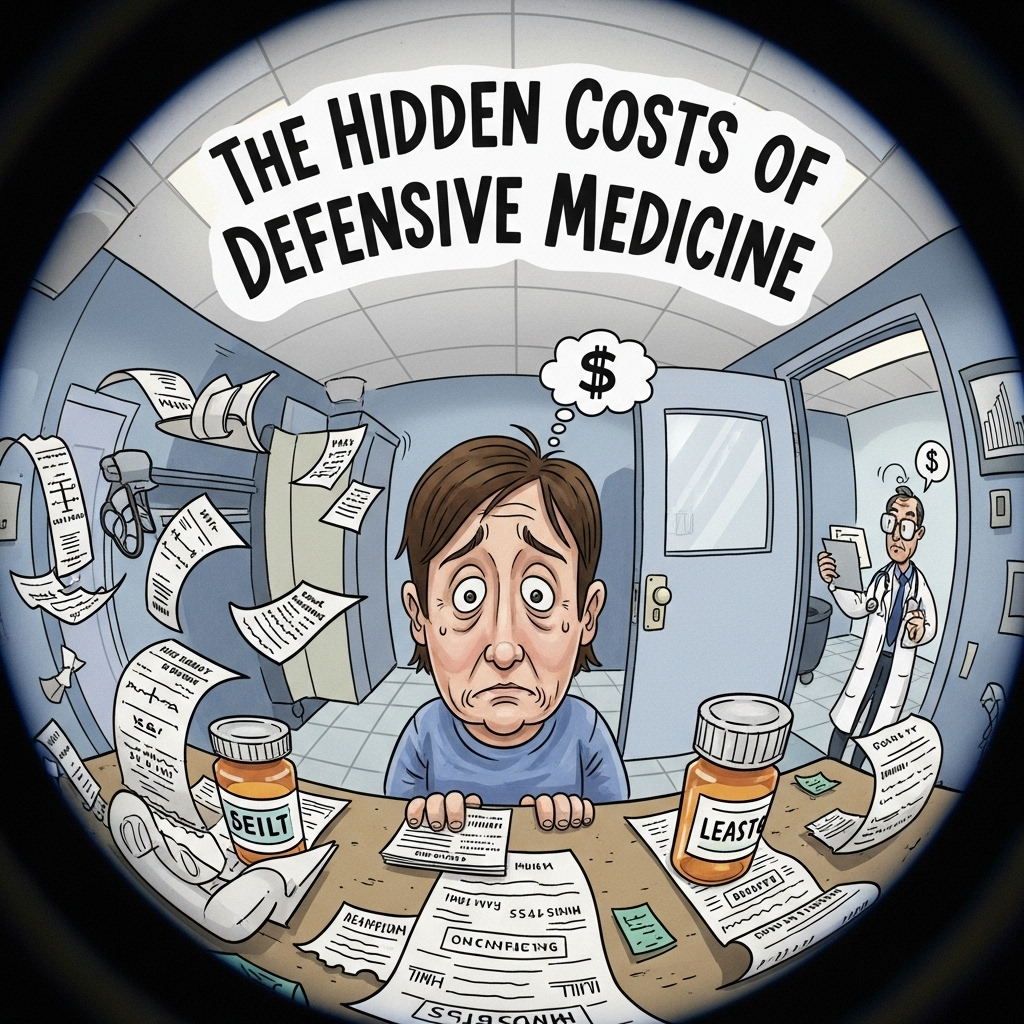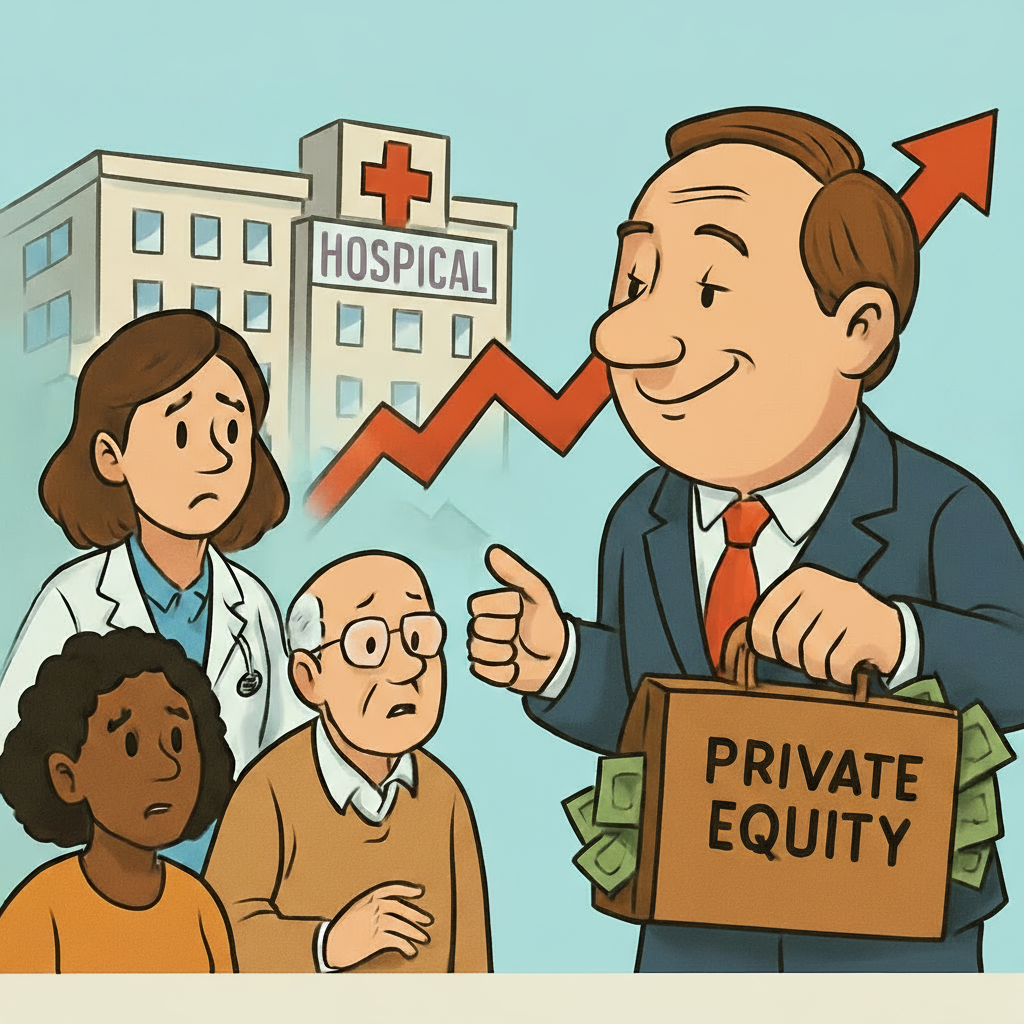Introduction: Medicine in a Litigious World
Every physician I know wants to provide the best care possible.
But in today’s legal climate, “best care” often comes with a second consideration: What will protect me if I get sued?
This mindset—whether conscious or subconscious—has given rise to what’s called defensive medicine.
It’s not about what the patient needs; it’s about what shields the provider from legal risk.
What Is Defensive Medicine?
Defensive medicine happens when a provider orders tests, procedures, or referrals primarily to protect themselves from potential malpractice claims, rather than because the patient’s condition truly warrants them.
It can take two forms:
- Positive Defensive Medicine – Doing extra (tests, imaging, referrals) to create a paper trail of thoroughness.
- Negative Defensive Medicine – Avoiding high-risk patients or procedures altogether to reduce exposure to lawsuits.
How Common Is It?
Surveys suggest as many as 75% of physicians admit to practicing some form of defensive medicine.
This is particularly prevalent in:
- Emergency medicine
- Obstetrics
- Surgery
- Specialty care involving complex or high-risk cases
The Financial Toll
Defensive medicine contributes significantly to healthcare costs in the US.
Estimates vary, but some studies place the cost at $45–$60 billion annually—and that doesn’t include the indirect costs of patient inconvenience, unnecessary follow-up, and anxiety from incidental findings.
The Patient Impact
Possible Harms Include:
- Unnecessary Testing – Increased exposure to radiation, invasive procedures, and false positives.
- Overdiagnosis – Detecting and treating conditions that would never have caused harm.
- Financial Burden – Higher bills for patients, especially those with high deductibles.
- System Strain – Resources diverted from patients with true medical need.
Why It Happens
Defensive medicine thrives in environments where:
- Malpractice insurance premiums are high.
- Legal protections for providers are limited (“No recovery, no fee’ contingency lawsuits”).
- Jury awards in malpractice cases can be substantial.
- Public perception equates “more testing” with “better care.”
Reducing Defensive Medicine Without Sacrificing Safety
1. Legal Reform
- Caps on non-economic damages
- Safe harbor laws for evidence-based guidelines
2. Cultural Change
- Educating patients about the limits of testing
- Encouraging trust-based relationships between providers and patients
3. Risk Management Training
- Teaching providers how to document and communicate effectively to prevent misunderstandings.
4. Peer Review and Support
- Creating systems where providers can discuss borderline cases without fear of legal repercussions.
Balancing Risk and Responsibility
Not every extra test is unnecessary—and avoiding tests solely to cut costs can be just as harmful as over-ordering.
The challenge is in finding the balance between prudent caution and wasteful overuse.
Final Thoughts: Getting Back to Patient-Centered Care
Defensive medicine shifts the focus from “What’s best for the patient?” to “What’s safest for me?”—and that’s not the mindset we should incentivize.
By addressing the legal, cultural, and systemic drivers, we can protect both patients and providers without inflating costs.
True quality care is measured in outcomes, not in the thickness of the chart.
About the Author
Douglas J. Jorgensen, DO, CPC, FAAO, FACOFP
Dr. Doug is a physician, consultant, and national educator on healthcare policy and regulatory compliance. He works to align clinical decision-making with patient needs while reducing unnecessary costs and risks.



